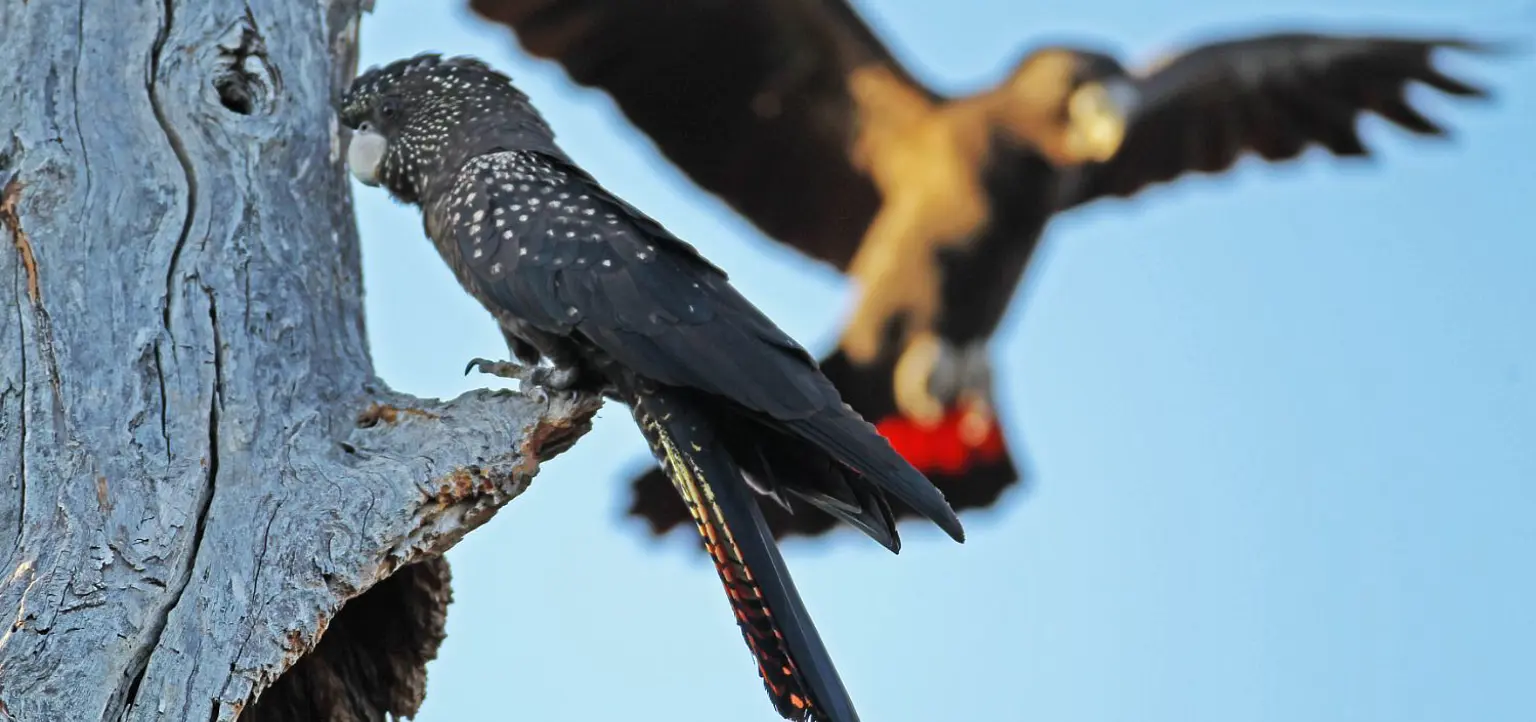Ongoing drought and fires endanger Victoria’s iconic wildlife

Conservation agencies, landholders and citizen science groups are working to protect the South-eastern Red-tailed Black Cockatoo. Image: Bob McPherson
Successive devastating bushfires have severely impacted native wildlife populations in Victoria and further catastrophic fires in coming summers could push some to the brink of extinction, a Federation University Australia researcher says.
Wildlife ecologist Dr Grant Palmer says the ongoing dry conditions in the state’s west means vegetation regeneration after massive fires is lagging, including across the Grampians-Gariwerd, Little Desert and Mt Cole, where more than 70 per cent of each of the parks was burnt.
This is putting species, including the South-eastern Red-tailed Black Cockatoo, Brush-tailed Rock-Wallaby and Long-nosed Potoroo at risk in Victoria’s west, while elsewhere the Eastern Bristlebird, Eastern Ground Parrot, Glossy Black Cockatoos, Southern Greater Glider, Broad-toothed Rat and the Spotted-tailed Quoll continue to be challenged by conditions following the Black Summer fires in 2020.
“There is always a long road to recovery after fires but these most recent events at the start of this year have followed other equally devastating fires and that has upset the balance,” Dr Palmer said.
“The environment has been recovering from earlier fires, but the latest fires shift the recovery trajectory and have amplified the problems these species have.”
There are estimated to be about 1,400 Red-tailed Black Cockatoos remaining in Western Victoria. Historically, more than 90 per cent of their preferred habitat has been cleared or severely modified.
When remaining habitats are impacted by large fires, then even less habitat is available for these birds to find sufficient food sources or nesting hollows.
The majestic birds rely on dwindling numbers of heathy woodlands – including seeds from brown stringybark trees.
Dr Palmer says conservation agencies, landholders and citizen science groups are working to protect the cockatoos, with monitoring programs and proactive measures like nestboxes installed to encourage their breeding.
He says the cockatoos live for about 25-50 years of age but have low reproductive output which contributes to concerns about their long-term survival prospects.
“Many people are passionate about these birds and the risk is that another major fire could really push them to the brink,” Dr Palmer said.
“This is an ecosystem that does need fire to regenerate and produce a good level of seeds, but it can take five to 10 years to get into that optimal range. The habitats just don’t get that opportunity where fires occur too frequently or burn too severely.”
